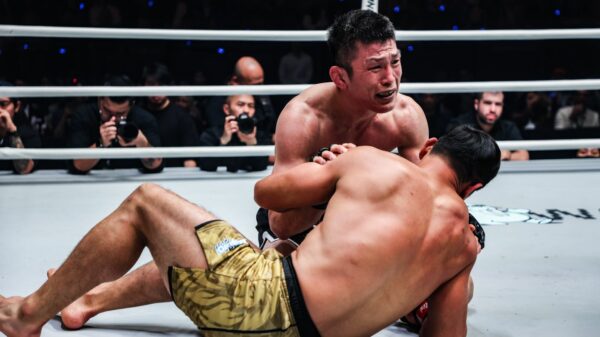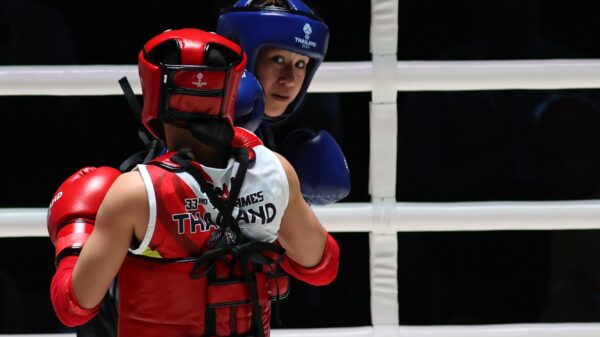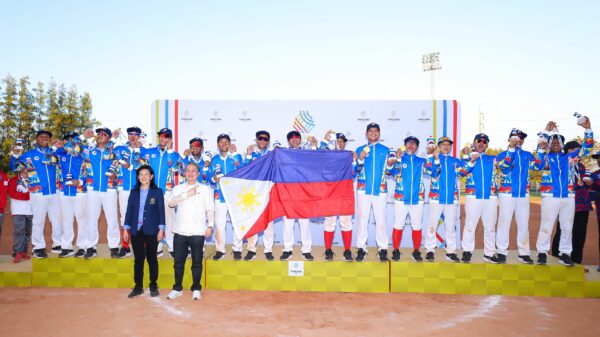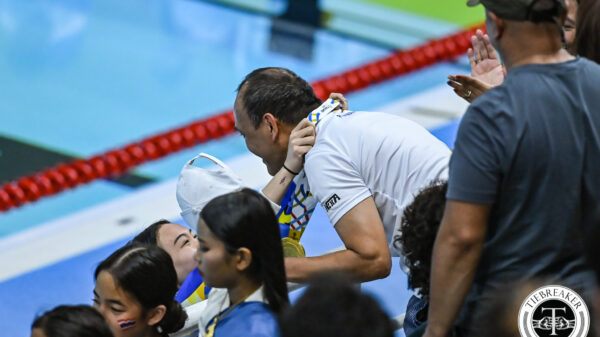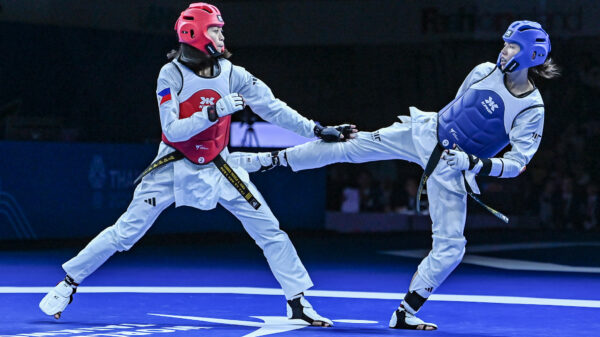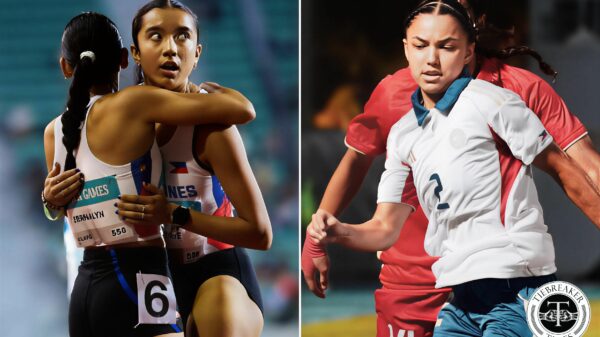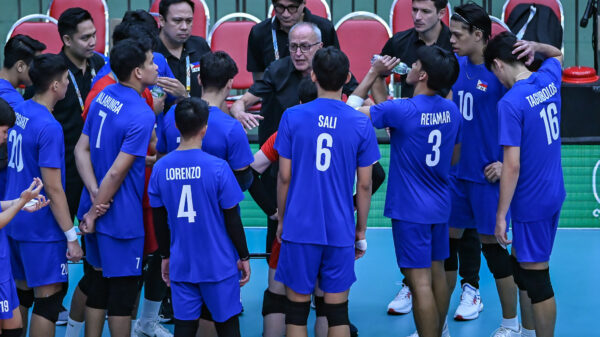[nextpage title = “Survival Kit”]
 The youngest event of the UAAP caught the public’s attention upon its debut in 2011. At the time, streetdance was already a highly competitive art form around the country, with a huge market previously untapped by major collegiate sports leagues. Showcasing amazing moves, unique skills and unbelievable talent, the streetdance competition has become one of the most highly anticipated events of this year’s UAAP calendar. Despite the one year hiatus, the UAAP Streetdance Competition is back for Season 77 and we’re expecting this year’s installment to be a fresh (re)start for the competition.
The youngest event of the UAAP caught the public’s attention upon its debut in 2011. At the time, streetdance was already a highly competitive art form around the country, with a huge market previously untapped by major collegiate sports leagues. Showcasing amazing moves, unique skills and unbelievable talent, the streetdance competition has become one of the most highly anticipated events of this year’s UAAP calendar. Despite the one year hiatus, the UAAP Streetdance Competition is back for Season 77 and we’re expecting this year’s installment to be a fresh (re)start for the competition.
Back in Season 73, the UAAP board decided to hold the first ever UAAP Streetdance Competition to cater to the rapidly growing popularity of streetdance among college students. By this time the Skechers Streetdance Battle had already established itself as the biggest in the country of its nature, and this led college leagues to follow suit. Since cheerdance was already set as the first semester exhibition sport of the UAAP, it would be fitting for the UAAP to hold streetdance in the second semester, with the hopes that it would eventually garner the same level of interest. Over the past four years, the UAAP Streetdance Competition saw its first champions in DLSU’s LSDC Street and the UP Streetdance Club.
Unfortunately, last year’s hosts decided not to push through with the Season 76 competition, which was disappointing for teams that had already been looking forward to the consistency of the event. This February 8 at the Mall of Asia Arena, the UAAP Streetdance Competition is back for the fourth time, and it’s a good thing too, because we’ve been clamoring to see just what the eight teams have been working on over the past two years.
THE ROOTS
Streetdance as we know it today takes its roots from the birth of the hip hop culture in New York City and the emergence of the funk style culture in the West Coast, both happening during the 1970s.
The term streetdance typically refers to any type of dance that was created and developed in a place outside the dance studio, such as the streets, block parties, and nightclubs. Unlike classical dance styles like ballet, streetdance styles are primarily social dances, usually made to accompany popular music. Here in Metro Manila, streetdance typically refers to urban dance styles that are related to or influenced by the hip hop culture, but this is not to be confused with the “street dance,” or cultural dance that is performed on the streets at festivals in different regions of the Philippines, such as Bacolod’s Masskara.
As with any sport, street dance involves honing physical skills through rigorous training and discipline. Not only does this training develop physical movement but it also aims to develop creativity and artistry. This is not entirely alien to the athletic world that has accepted rhythmic gymnastics and DanceSport . In addition, the original street dance culture started with solo or crew “battles” as its first type of competition. In this battle format, competitors face-off in a back and forth repartee of movement in the same vein as in fencing, boxing and the like. Although the UAAP Streetdance Competition opted for a showcase format, the spirit of its roots still runs high among today’s competitors.
CHEER vs. STREET
Judging criteria. Both cheerdance and streetdance have an artistic and a technical aspect in judging. The UAAP Cheerdance criteria consists of two main parts: cheerleading and dance. The cheerleading sub-criteria is very technical, and consists of four elements: tumbling, stunts, pyramids, and tosses which are all required to be in the piece.
For the UAAP Streetdance Competition, there are two sub-criteria, performance and skills, each given 50% bearing. The performance criterion includes creativity, spacing/formation/staging, showmanship, attire, variety of styles, and choreography. For skills, factors include musicality, timing, execution, technique foundation, and difficulty.
Piece formulation. The typical structure of a streetdance piece is less technical than a cheerdance piece, and is more free when it comes to piece construction. Unlike UAAP Cheerdance, where each performance must include those specific cheer elements, UAAP Streetdance only requires a minimum of two old school styles (styles that were born in the ‘70s: popping, locking, breaking) and two new school styles (styles that emerged after the 1970’s). Stunts are not necessarily required for streetdance, and in some cases, are not encouraged due to the high risk involved.
Style. In both cheerdance and streetdance, teams have the freedom to pick a theme for their piece. Although not necessarily part of the cheerdance criteria, themes used by cheerleading squads are put in such high regard (or criticism) by the general public. We’d usually remember a cheerdance piece by its theme, but this is not the case for streetdance. It is not common to see prominent themes in local streetdance competitions, but rather the main goal for a street dancer is to innovate and elevate the standards of present street styles to come up with fresh and new combinations for their piece to make it both memorable and entertaining.
However, don’t expect the results of the Cheerdance and Streetdance Competitions to have a bearing on the UAAP general championship as they are both exhibition sports and are unfortunately not counted in the tally.
WHY STREETDANCE MATTERS
Streetdance as a community. Streetdance lives through an enormous network of dancers around Metro Manila. It’s difficult to estimate just how many people are involved in the local streetdance community, because there are just so many subgroups in the dance sphere (freestylers, bboys, commercial dancers, etc.). High school and college dance communities have a scene of their own, with a school year calendar full of periodical inter-school dance competitions and events.
Streetdance as an art. The Cheerdance and Streetdance events in the UAAP have the unique quality of being an art form put in a competitive sports environment, so there will always be the factor of judges’ preference, which we think makes it controversial yet exciting. Both events depend on creativity and originality.
Streetdance and its relevance. The streetdance art form is ubiquitous: this is the kind of dancing that you see in most music videos, variety shows, and all forms of media. Streetdance continues to evolve vis-a-vis popular music, which is a quality not as evident in cheerdance. This style of dance has been popularized on TV shows such as So You Think You Can Dance and America’s Best Dance Crew and developing a more underground following on YouTube and social media sites.
[/nextpage] [nextpage title = “The Crews”]
THE CREWS
Adamson University: Adamson CAST
CAST is a consistent competitor in the streetdance circuit, most notably being the champions of RX 93.1 Rhythm Street back in 2013. Adamson has strong individual dancers, and is known for doing mostly urban choreography, but usually brings out a male-dominated lineup. In the most recent UAAP Streetdance Competition, they presented a very clean and strong piece and garnered a third place finish, their highest so far in the competition. CAST would definitely want to use that momentum from their last UAAP appearance to maintain or even improve their third place standing.
Ateneo de Manila University: Company of Ateneo Dancers (CADs)
Ateneo is home to one of the strongest streetdance competitors, usually landing a spot in the top three in every contest they join. CADs is one of the top teams in the community, even bagging a Skechers Streetdance Battle championship back in 2010. During the most recent UAAP Streetdance, CADs was unfortunately unable to maintain their usual podium finish: it was the first time they did not place in the competition. However, over the past two years, CADs has undergone a major change in leadership, as, for the first time in CADs history, they now compete and train under a coach. This change for Ateneo proved to be an effective one, landing second place in last year’s Skechers, but it will definitely be interesting to see if this change will carry through to their performance on February 8.
De La Salle University: La Salle Dance Company – Street (LSDC Street)
No stranger to big arenas, LSDC Street could be considered as the top local college streetdance team in recent years. Their consistency is impressive: they place first in most competitions they join. The team is also recognized internationally, making it to the Finals of the World Hip Hop Dance Championships in Las Vegas the two times they competed. LSDC is known for their sheer power and stage presence when performing, and that’s the reason why it’s so entertaining to watch them. They have the best track record so far in UAAP Streetdance’s short history, with two titles under their belt, but fell to second place in the last installment of the competition. It will be interesting to see how LSDC plans to make a comeback and add yet another championship to their long list of distinctions.
Far Eastern University: FEU Dance Company
The FEU Dance Company is rooted in classical and Filipino dance styles and started dabbling in streetdance due to the demand for representation in college competitions. Nonetheless, their Street Dance team has been active in the scene for a while, being a consistent competitor in Skechers since 2009 and is known for intricate visuals and elements. FEU is recognized as an up-and-coming team — one of those teams that keeps getting better over time — so it should be interesting to see just how much they’ve improved and if this upgrade is enough to land them a spot in the top three this year.
University of the East: UE Street Warriors
The UE Street Warriors, along with UST Salinggawi, have not experienced competing in a major streetdance competition like Skechers but have had their share of experience in the Slimmer’s World competition and on ABS CBN’s Showtime. UE and FEU are alike in the way that both are active in the streetdance circuit, but have yet to find their footing as a podium finisher in major competitions. What we’re all waiting for is a breakthrough piece to make the event even more interesting, and UE could be in a good position to be that team.
National University: NU Underdawgz
The NU Underdawgz made quite an impact with their Skechers piece back in 2011, whipping out extreme acrobatics and tosses twenty feet high, which are what we should all expect from the two-time UAAP Cheerdance champions. Even though the Underdawgz have yet to place in a major competition, we can’t wait to watch their exhilarating performance and death-defying stunts. This year, we’re hoping to see a piece that would play to their strengths, and finally place these underdogs above the rest.
University of Santo Tomas: UST Salinggawi Dance Troupe
Unlike other schools, UST has several groups that specialize in streetdance, but no centralized one, so Salinggawi has been taking on the responsibility of representing their school for the UAAP Streetdance Competition. UST Salinggawi Dance Troupe, as you all may know, is the same dance troupe that has won several UAAP Cheerdance titles, and is known to be a very flexible dance group, covering everything from traditional Filipino dance to streetdance. Salinggawi still hasn’t placed in a major streetdance competition but what sets them apart is their versatility as dancers and creativity when mixing dance styles — both of which could definitely help them bag a spot in the top three this year.
University of the Philippines: UP Streetdance Club
Among all the competitors in this list, the UP Streetdance Club is the most internationally-recognized, boasting of two World Hip Hop bronze medals earned in 2012 and 2013. Probably the most well-known, UP Streetdance Club was actually the first formal collegiate streetdance team locally, with their founder Sir Jerome Dimalanta formalizing what we know locally as “streetdance” today. UP Street is most famous for dominating the Skechers Streetdance Battle in their early years, winning four out of the first five installments, which popularized the nickname “The Dynasty” because of their supremacy in the streetdance circuit. The students competing for UP this year may not be the same UP Street from years ago, but they’re definitely going to pull out all the stops to be able to defend their UAAP Streetdance title, and maybe even establish superiority over this competition as well.
Videos from Jeremy Vidal of TheGrooveAdrenaline
[/nextpage] [nextpage title = “Forecast”]
FEARLESS FORECASTS
The past three installments of UAAP Streetdance have been dominated by three teams: LSDC Street, the UP Streetdance Club, and CADs. This is completely consistent with how results go in other major collegiate dance competitions as these three teams are regular podium finishers at the Skechers Streetdance Battle as well. Although some people say that this could make the UAAP Streetdance event just as predictable as any other competition, what makes the contest tighter is the fact that there are only eight teams in the league. No other dance competition has such an exclusive number of competitors battling it out for a title, and this places significant pressure on the whole league to step up their game further every single year.
THE WRAP-UP
Although the UAAP Streetdance Competition is relatively new, we think it can become a very important part of the yearly streetdance calendar. Being the only live televised college streetdance competition to date, it has the potential to garner as much school support as other televised UAAP events such as basketball and volleyball. This will highlight the athleticism of dance as a sport-type competition in addition to how dance is already regarded as an entertainment art form. Hopefully, this may lead to more recognition and respect given to professional dancers who prepare and train just as hard as athletes and who continue to push themselves to the frontiers of creativity and expression. Maybe in time, with dance figuring more prominently in the UAAP, this recognition may translate to universities channeling more support towards dance organizations and teams.
However, that’s looking far into the future. For now, we’re just happy that this year’s hosts, UE, decided to bring the competition back and we’re excited to see what teams have in store for us as the Streetdance Competition of UAAP Season 77 kicks off this Sunday, February 8, at the Mall of Asia Arena.
[/nextpage]

































